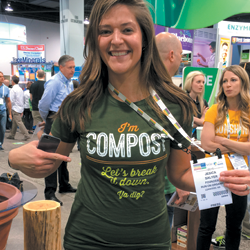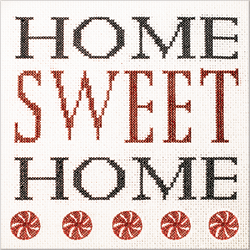|
REGISTRATION REQUIRED
all-star awards

photos: James Messina; shutterstock.com
Landscape Artist
To update his exhibits in the face of changing customer needs, James Messina revamps them in a vintage style with his bare hands and hauls in a 400-percent increase in leads. By Charles Pappas
James Messina
 Selected as one of Inc. Magazine's inaugural "Top 30 Under 30: America's Coolest Young Entrepreneurs" in 2006, James Messina has been repeatedly recognized by peers and organizations for transforming his family business into a national and international brand with customers on four continents. A known risk-taker in the lawn and garden industry, Messina has been instrumental in bringing forward exciting marketing and sales promotions, including introducing his company to the world with its float in the Pasadena Tournament of Roses Parade, appearing on radio and television programs, and more. Selected as one of Inc. Magazine's inaugural "Top 30 Under 30: America's Coolest Young Entrepreneurs" in 2006, James Messina has been repeatedly recognized by peers and organizations for transforming his family business into a national and international brand with customers on four continents. A known risk-taker in the lawn and garden industry, Messina has been instrumental in bringing forward exciting marketing and sales promotions, including introducing his company to the world with its float in the Pasadena Tournament of Roses Parade, appearing on radio and television programs, and more. To meet that need, Messina began carefully hatching an ambitious plan to broaden his product offerings to include fertilizers for a variety of lawns and gardens. But diversifying the company's portfolio of products brought about another problem that needed solving: How would Messina market them on a limited budget and with a quartet of tired, old exhibits? Growing Pains Over the years, Messina's marketing approach had branched out in sync with an expanding array of products, using an eclectic mix that included orchestrating a giveaway of a Prius in Better Homes & Gardens magazine, entering a float in the 2011 Tournament of Roses Parade, appearing on a variety of radio and television programs such as "Ted Nugent Spirit of the Wild," speaking at high-profile shows including the Global Forum for Innovations in Agriculture in Abu Dhabi, United Arab Emirates, and, of course, exhibiting at a variety of expos. Starting with a single booth, Messina added three more to handle his ever-growing schedule of trade shows, several of which ran concurrently and in international locales. Still, by comparison to his many promotional efforts, the company's exhibits were simple pop-ups measuring 10-by-10 feet and 10-by-20 feet with traditional accordion-style graphic panels that gave the spaces a generic look.   BEFORE: Messina felt his company's previous exhibits projected a generic image that failed to resonate with attendees.
BEFORE: Messina felt his company's previous exhibits projected a generic image that failed to resonate with attendees.
Messina believed that, in an age where every competing company has a digital presence and often possesses a promotional budget that dwarfs his own, he had to find more and better ways to engage his audience and market to them. For him, there was no question that meant improving the business's presenceat trade shows because they offered crucial advantages upon which other marketing avenues came up short. For example, trade shows provide the physical space to highlight the company's longstanding and newly diversified product lines, and they supply an opportunity to talk face to face with customers for extended periods, selling them on a range of goods. Messina's current booths, while in his judgment functional enough, didn't have the kind of personality that would make them memorable. In fact, they were about as plain as an unfinished two-by-four. By 2015, the company's roster of shows had mushroomed to almost 30 domestic and international events. And since many of those shows ran simultaneously, he was faced with the daunting challenge of replacing all four of his existing structures at one time in order to up the company's marketing ante while maintaining brand consistency. But when he fired up his calculator and tallied the potential expense of building four 20-by-20-foot booths, it came out to a grimace-inducing – and wallet-emptying – $200,000 to $250,000. "I was running the numbers, looking at the investment required to diversify our product line, the cost of appearing at numerous shows, and the price tag of four new booths," Messina says. "It was a recipe for financial disaster. There simply had to be another way for us to approach this."  Since Messina's eponymous lawn-care company had branched out into offering fertilizers, it was crucial that the redesign allowed old and new products to be displayed on equal footing.
Since Messina's eponymous lawn-care company had branched out into offering fertilizers, it was crucial that the redesign allowed old and new products to be displayed on equal footing.
Although the disconcerting price tag was hanging over his head, Messina plowed onward with planning the new exhibits. His initial step was deciding on a general look and feel for the booths that would resonate with customers. Some might have sought an attention-getting display that was outre or kitschy instead of one that would connect with their unique customers. But during Messina's tenure at the company, his observant eye had noticed a particular trait about the people who owned and operated the independent garden centers that made up the bulk of his customer base: Many were mom-and-pop businesses, and the physical appearance of their buildings often remained untouched over the span of multiple generations. That light-bulb-over-the-head insight gave him an idea that would redefine his booths' designs. With basic pop-up displays inundating more and more show floors, he felt, a vintage-feeling space might remind attendees of their own facilities and backgrounds and help them to imagine his products on their shelves. Even the mass merchants and supply houses that comprise the remaining 10 percent of his customer base could be won over by the nostalgic appeal, Messina reasoned, since the industry is rooted in family and old-fashioned ways of doing things. The first of the four new booths would be unveiled at the National Hardware Show, an expo at which the company had exhibited for years. Given its size – 2,600 exhibitors and 30,000 attendees, with many recurring customers and sundry prospective ones – Messina believed, for better or worse, it would be a genuine test of the new design's effectiveness. It was a gamble, but one he felt confident hazarding.  In the span of just two weeks, Messina and his improvised work crew banged out four new 20-by-20-foot exhibits.
In the span of just two weeks, Messina and his improvised work crew banged out four new 20-by-20-foot exhibits.
In early 2015, Messina, along with the help of three others – including his father and a cousin, a Sicilian woodworker who happened to be vacationing in the United States at the time – began the DIY build-a-booth effort. They scoured local hardware stores, an art supply outfit, and a local woodworker's supply store for the booths' raw materials, spending a measly $4,000, or about 1.6 percent of the $250,000 Messina initially feared he might have to allot for replacing the old booths. In the span of just two weeks, Messina and his makeshift crew fabricated the new exhibits, each of which measured 20-by-20 feet. Made mostly of corrugated metal and pine wood, the finished structures sported side walls that looked like pallets with wooden shelving, as well as handmade signs that Messina sponge-painted himself. The lighting hailed from Restoration Hardware, and the custom shelving and display cases were knocked together by the impromptu team. To keep the down-to-earth aesthetic going, he spray painted the Messinas logo on the almost-complete booths rather than using a vinyl graphic. Authenticity, he knew, was key.  The side walls of the new exhibit, constructed from pine lumber, were designed to mimic the look of weathered shipping pallets and served as ideal displays for the company's full line of products.
The side walls of the new exhibit, constructed from pine lumber, were designed to mimic the look of weathered shipping pallets and served as ideal displays for the company's full line of products.
A Garden-Variety Success The question of whether the exhibit, with its homespun design and humble price tag, could be ultimately profitable would in turn be resolved when the National Hardware Show opened its doors in Las Vegas last May. "I was excited more than nervous," Messina says. "It was like knowing you have an amazing secret that you can't wait to share with the world." His 400-square-foot booth, with its complement of five staffers, was overrun from the opening moments of the show. Customer after customer praised the exhibit, while dozens asked for detailed information on how they could replicate its vintage look in their own retail stores. In fact, the design's throwback appearance held visitors' attention for so long it became its own spontaneous, sales-free conversational icebreaker that often ended with guests remaining in the booth twice as long as they had in past exhibits at the show.  Spending just $4,000, Messina purchased the materials for the new booths at local retailers.
Spending just $4,000, Messina purchased the materials for the new booths at local retailers.
The long-term effect of the exhibit overhaul's success has been to inspire Messina to keep innovating. "It taught me that change can be rewarding," he says. "And, believe me, we have a lot more change coming." E
|
|
|
||||||||||||||||||||||||||||
|
|
||||||||||||||||||||||||||||
|
TOPICS Measurement & Budgeting Planning & Execution Marketing & Promotion Events & Venues Personal & Career Exhibits & Experiences International Exhibiting Resources for Rookies Research & Resources |
MAGAZINE Subscribe Today! Renew Subscription Update Address Digital Downloads Newsletters Advertise |
FIND IT Exhibit Producers Products & Services All Companies Get Listed |
EXHIBITORLIVE Sessions Exhibit Hall Exhibit at the Show Registration |
ETRAK Sessions Certification F.A.Q. Registration |
EDUCATION WEEK Overview Sessions Hotel Registration |
CERTIFICATION The Program Steps to Certification Faculty and Staff Enroll in CTSM Submit Quiz Answers My CTSM |
AWARDS Exhibit Design Awards Portable/Modular Awards Corporate Event Awards Centers of Excellence |
NEWS Associations/Press Awards Company News International New Products People Shows & Events Venues & Destinations EXHIBITOR News |
||||||||||||||||||||
|
||||||||||||||||||||||||||||






